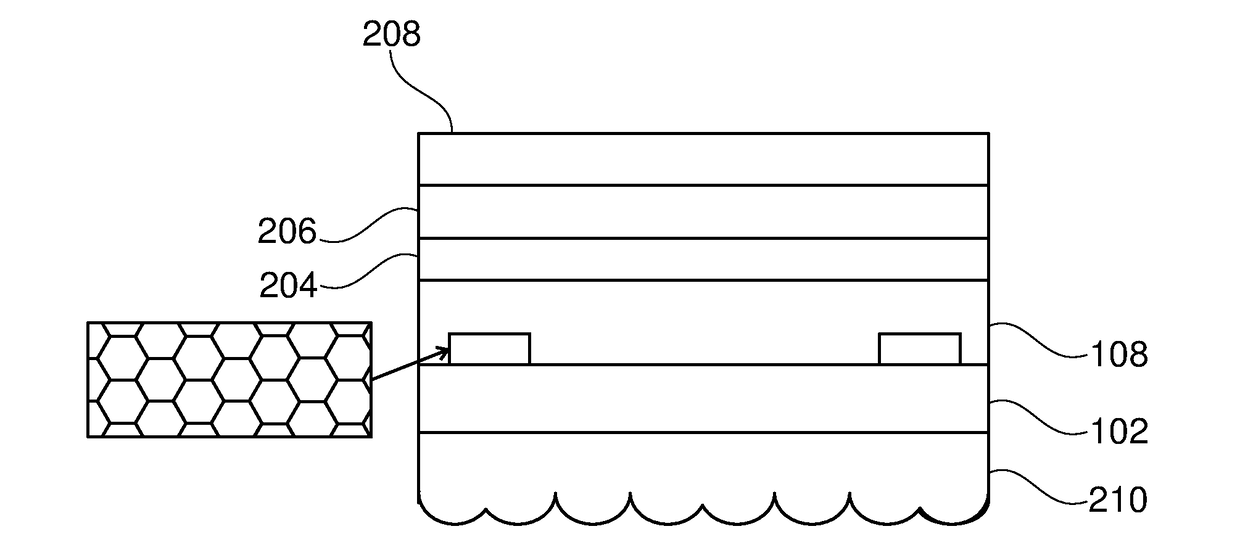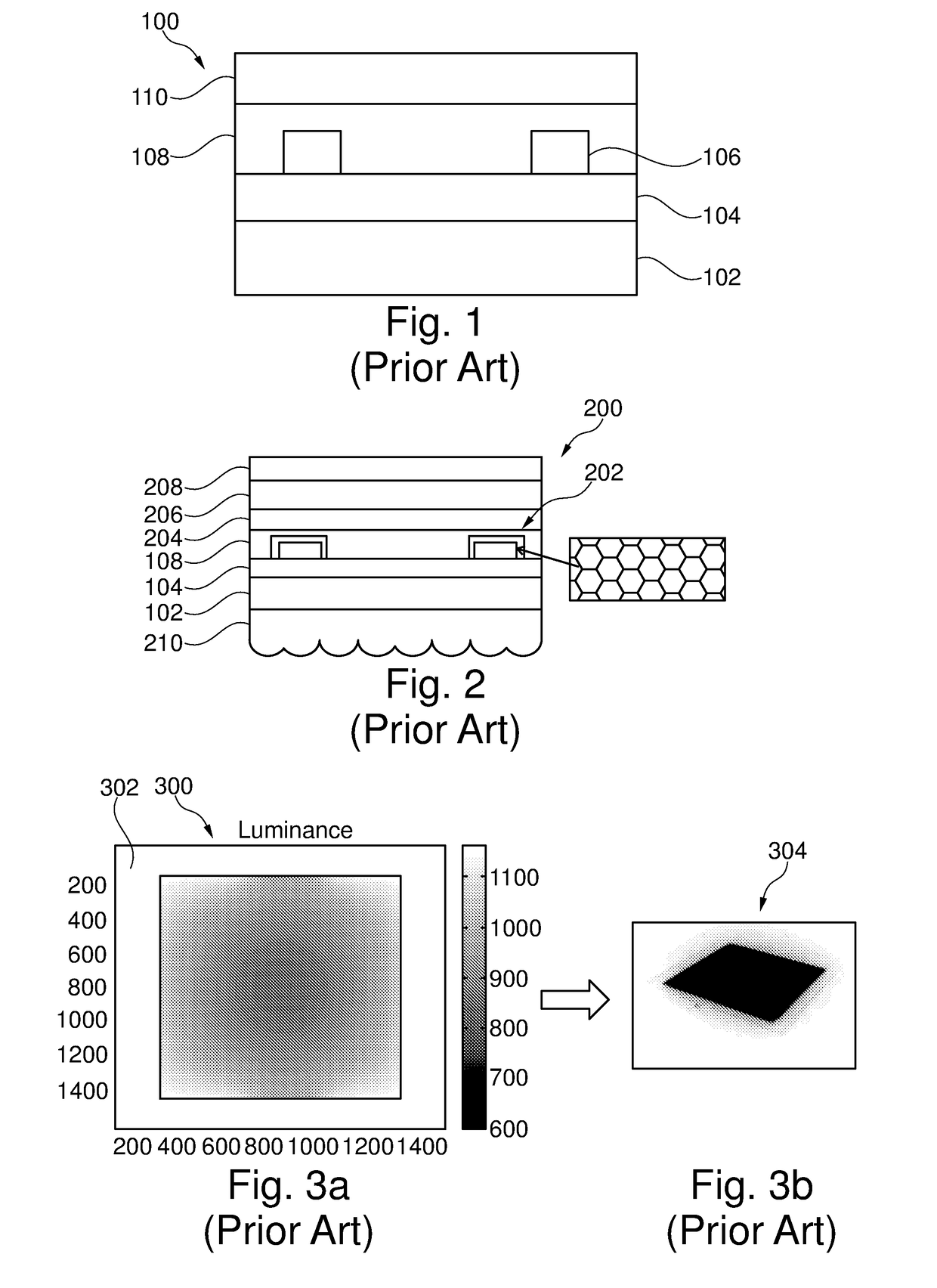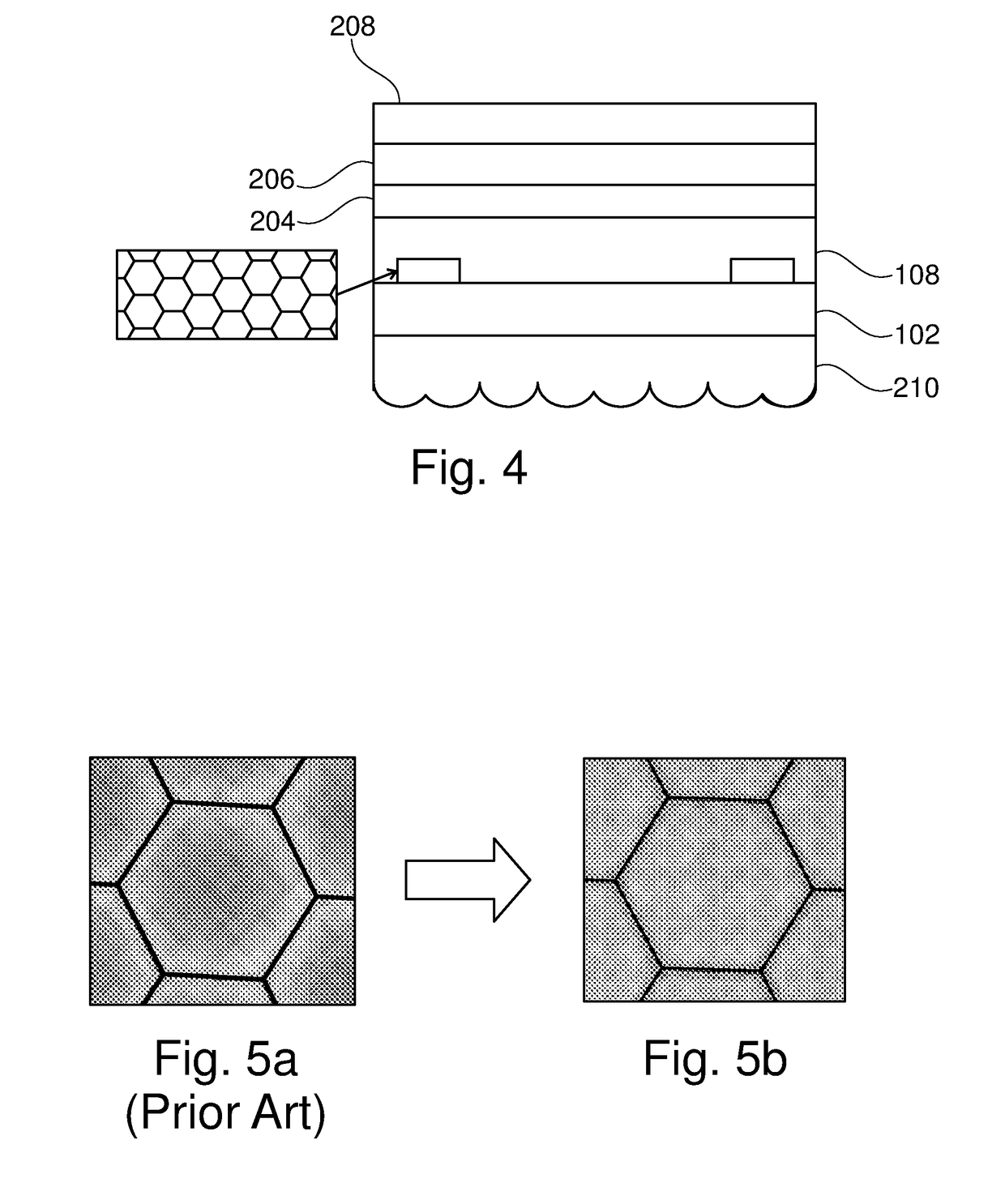Method of making an electronic device
- Summary
- Abstract
- Description
- Claims
- Application Information
AI Technical Summary
Benefits of technology
Problems solved by technology
Method used
Image
Examples
Embodiment Construction
[0079]As outlined above, metal tracking has been exploited in the prior art in order to improve, e.g. the uniformity of light emission over large area tiles.
[0080]Typically, in the prior art, the metal grid and the lateral conductor are prepared in two separate deposition, photo-patterning and etching sequences. This results in high manufacturing costs.
[0081]Furthermore, as outlined above, an additional planarization layer, such as a transparent planarization layer in light-emitting devices, is generally necessary in devices of the prior art which use a single metal grid before deposition of the next active layer (such as hole-injection layer or light emitting layer.
[0082]Embodiments described herein allow for fabricating an electronic device without the need of an additional planarization layer (e.g. a transparent planarization layer in light-emitting devices).
[0083]Furthermore, a separate continuous, unpatterned lateral conductor, such as ITO, can be unecessary in embodiments desc...
PUM
 Login to View More
Login to View More Abstract
Description
Claims
Application Information
 Login to View More
Login to View More - R&D
- Intellectual Property
- Life Sciences
- Materials
- Tech Scout
- Unparalleled Data Quality
- Higher Quality Content
- 60% Fewer Hallucinations
Browse by: Latest US Patents, China's latest patents, Technical Efficacy Thesaurus, Application Domain, Technology Topic, Popular Technical Reports.
© 2025 PatSnap. All rights reserved.Legal|Privacy policy|Modern Slavery Act Transparency Statement|Sitemap|About US| Contact US: help@patsnap.com



